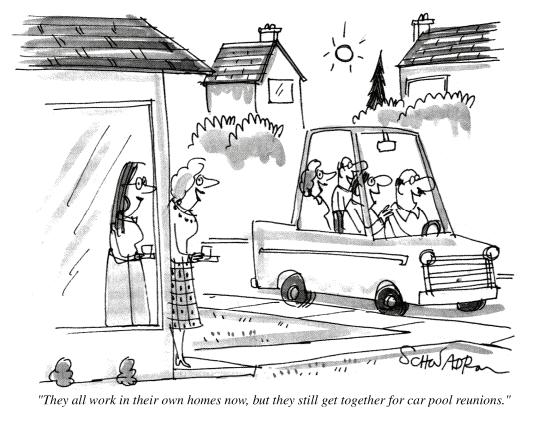Explanation:
Both statements (i) and (iii) convey a notion of equality. Statement (i) emphasizes that despite differences in abilities, individuals deserve equal rights. Statement (iii) suggests equality within the context of the church, implying that all are equal once inside. These statements share a common theme of advocating for equality among people, albeit in different contexts.

Explanation:
The cartoon shows the social implications of a decentralised workforce.
Explanation:
The cartoon suggests that current work practices are unsatisfying.
Explanation:
The tone of the poem is characterized by bitterness, as evidenced by the repetition of "pile them high" and the indifferent portrayal of death. The speaker's derisive attitude toward war and its consequences is evident throughout the poem.
Explanation:
In the poem, the grass is used as a symbol to represent nature's indifference to human suffering and mortality. The repeated lines "I am the grass; I cover all" emphasize the universality of death and the natural cycle of life. Thus, the grass symbolizes resilience, continuity, and the inevitability of death.
Explanation:
The passage describes how the man initially struggled to differentiate shapes visually. He associated shapes with tactile sensations and colors rather than perceiving them directly. This indicates that he formed visual impressions of shapes indirectly, relying on other sensory cues to understand the visual information he was receiving.
Explanation:
The man's mistake about the square indicates that he struggled to interpret visual information accurately despite being able to see. This suggests that he could not fully utilize visual clues to understand shapes, which aligns with the challenges he faced in distinguishing shapes visually as described in the passage.
Advertisement
Explanation:
The man's reference to the shapes as "one patch of light" suggests that he does not yet fully associate visual images with shapes. This implies that he is still developing his visual perception and struggling to distinguish shapes visually, as described in the passage.
Explanation:
The passage suggests that shape perception, especially for someone newly gaining vision after a lifetime of blindness, is dependent on experience. The man in the passage struggles to distinguish shapes visually, indicating that his ability to perceive shapes is influenced by his limited experience with visual stimuli.
Explanation:
Both statements (i) and (iii) advocate for the importance of equality. Statement (i) emphasizes equal access to opportunities despite individual differences, while statement (iii) highlights the legal principle of equality regardless of social status.
Explanation:
Both statements (iii) and (iv) suggest positive aspects of equality. Statement (iii) implies equality within certain institutions, promoting social cohesion, while statement (iv) highlights the benefits of diversity, indirectly endorsing equality of opportunity.